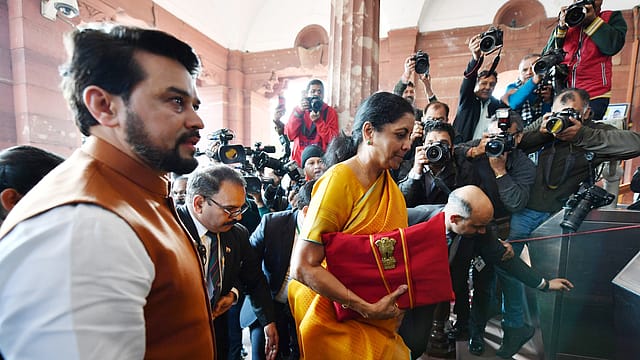Budget 2020: Incremental benefits to manufacturing sector with no big bang reforms
ADVERTISEMENT

Faced with the challenge of revving up India’s economic slowdown, Finance Minister Nirmala Sitharaman took a more measured approach in her second budget today providing an impetus to only a few key sectors which translates to a moderate stimulus for the manufacturing sector. However, proposals for a few sectors, including electronics manufacturing, transport infrastructure and solar energy, besides increase in certain import duties, would bring some cheer.
Let’s examine some of the major themes that the government has spelt out for the manufacturing sector:
Highways and airports key to infrastructure growth
Contrary to last year’s big ticket moves in infrastructure, including the Rs. 103 lakh crore National Investment Pipeline, the major announcements in infrastructure focused on the transport sector. The government announced 100 airports under the UDAN scheme by 2024 and an accelerated approach to the development of highways, including the strategic Delhi-Mumbai and Chennai-Bengaluru expressways. While this move is expected to benefit all infrastructure-related industries, including steel, cement, capital goods and Maintenance, Repair and Overhaul (MRO), efficiency in connectivity is also expected to create a short term ripple effect in the automobile sector and bring down costs in logistics-heavy sectors. One key highlight here, however, has been the focus on renewable energy, especially the solar sector. This is driven by energy requirements in rural areas as well as for setting up of solar capacity by the Railways, which will push growth in solar panel manufacturing. The announcement of five new smart cities is also expected to push growth in the allied sectors.
December 2025
The annual Fortune 500 India list, the definitive compendium of corporate performance, is out. This year, the cumulative revenue of the Fortune 500 India companies has breached $2 trillion for the first time. Plus, find out which are the Best B-schools in India.
Push for foreign investments
Increased private sector investments for corporates are critical to ensuring growth. While the budget does deliver some much-needed reforms to the investment-starved economy, there are still pockets of possibilities that remain. The removal of Dividend Distribution Tax is expected to bring down the tax burden for incoming investors and further the effort to make India an attractive destination for investments. Also, the proposals for 100% tax concession on investments for sovereign wealth funds as well as increase in Foreign Portfolio Investor (FPI) limits is expected to attract greater foreign investment and provide the much needed capital impetus required by Indian businesses.
Increase in digital connectivity
The push for new age industries, including quantum computing, machine learning and AI and an increased focus on connectivity as a whole, creates requirement for a foundational ecosystem that can sustain its growth. Proposals for creation of data centre parks and a significant outlay for BharatNet entails opportunities for manufacturers in the digital ecosystem, especially electronics manufacturing. The industry will get growth impetus with the launch of a new scheme to encourage production of electronic equipment, including semiconductors and mobile phones.
Custom duties to tighten imports in favor of domestic manufacturing
In an effort to push growth with domestically produced goods and services, there has been upward revision in import prices for footwear and furniture driven by a 5% increase in customs duty. There has also been an additional levy of health cess on import of medical equipment as corresponding domestically produced devices are now being manufactured in India on a significant scale and can be also be used to further health services in aspirational districts in a cost-effective manner. Revision in rates to support phased manufacturing plans for electric vehicles as well as mobile parts is also expected to advance domestic manufacturers in these sectors. The push to domestic industries is also pronounced in case of technical textiles with the National Technical Textile Mission instituted to reverse the $16 billion imports in this sector. Additionally, the reduction in customs duty on inputs and raw materials like fuse, chemicals and anti-plastics is expected to further boost the manufacturing sector.
Overhaul of personal tax regime
In an effort to widen the tax net further and simplify the tax filing process, the Finance Minister proposed a downward revision of tax rates across the board at the cost of elimination of 70 out of more than 100 exemptions. While this move entails a direct hit of ₹40,000 crore to government revenue annually, it is also expected to propel consumption once the taxpayers opt for the simplified regime, driving growth and manufacturing in consumer businesses.
Given the context of macro challenges that the economy faces and the target of reaching $5 trillion by 2024, the budget does promise some impetus to the manufacturing sector in pockets but more needs to be done to bolster the projected growth rate. With focused implementation of the proposed moves, including the bold decision of rationalising the corporate tax regime to the lowest rates in the world last year, returns will materialise over the next few years.
The authors are partners in Bain & Company’s New Delhi office. They both co-lead the firm’s Advanced Manufacturing & Services practice in India
